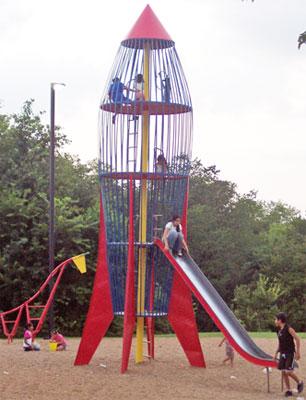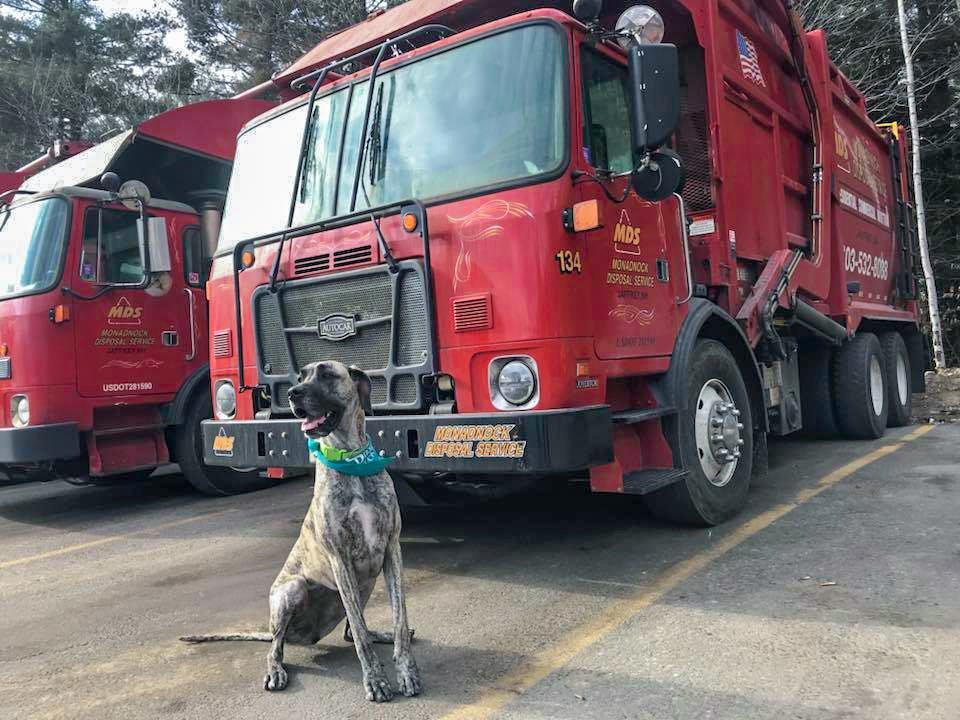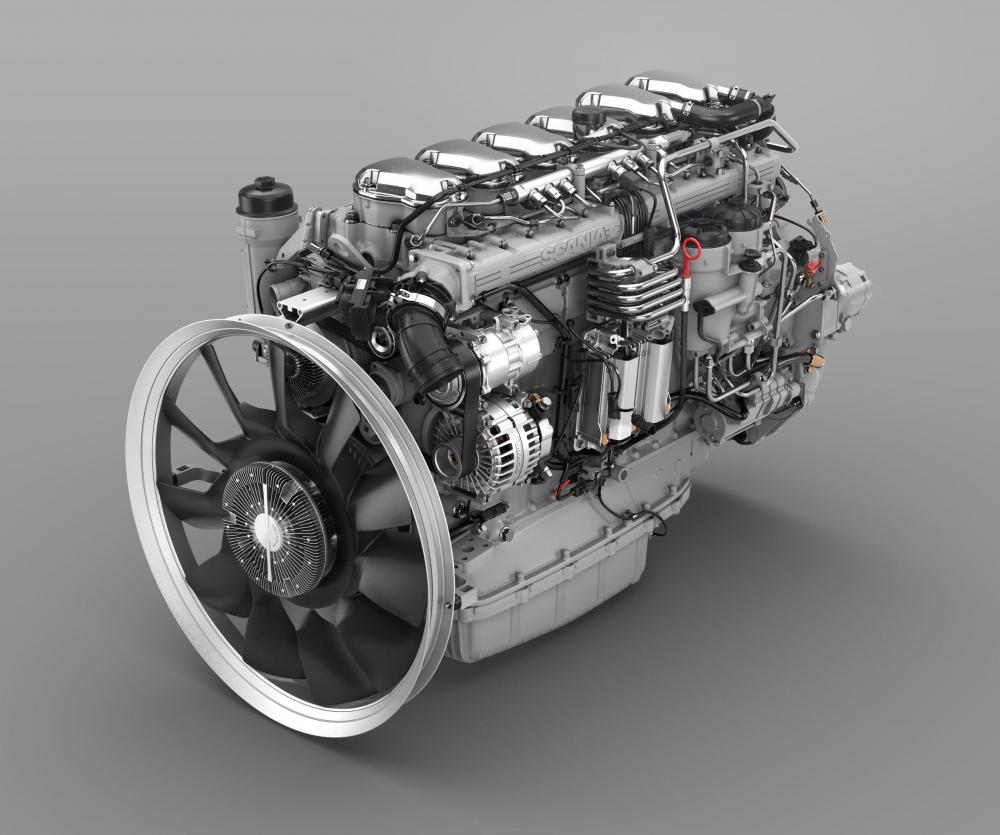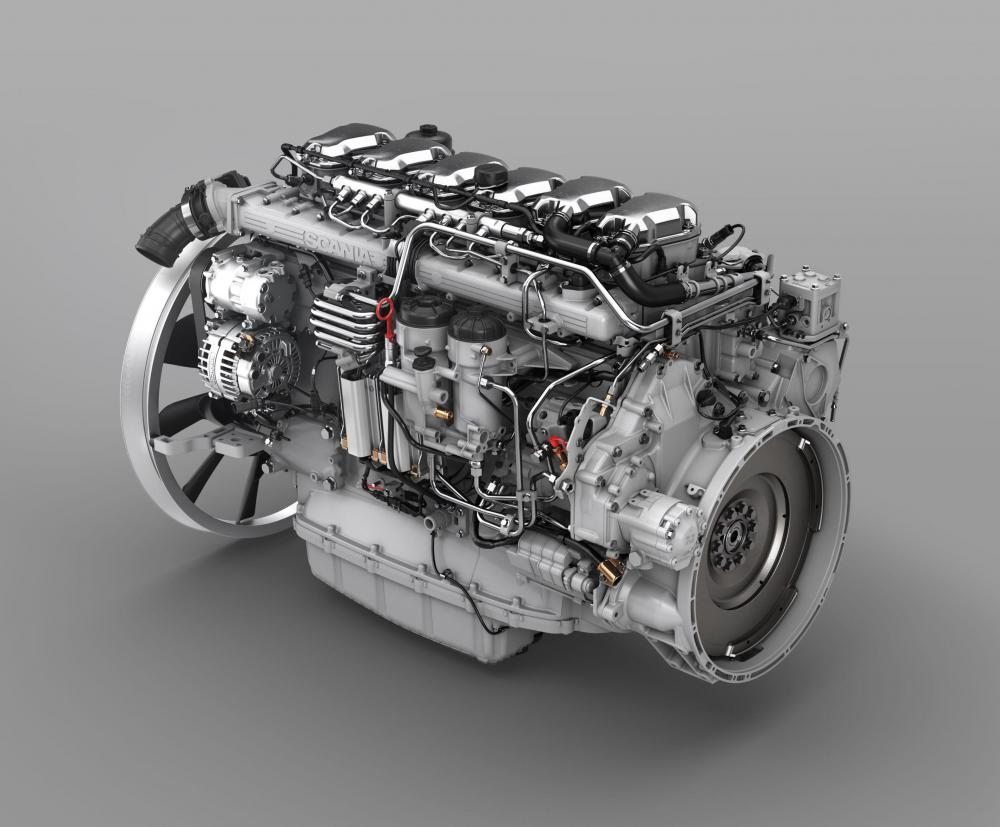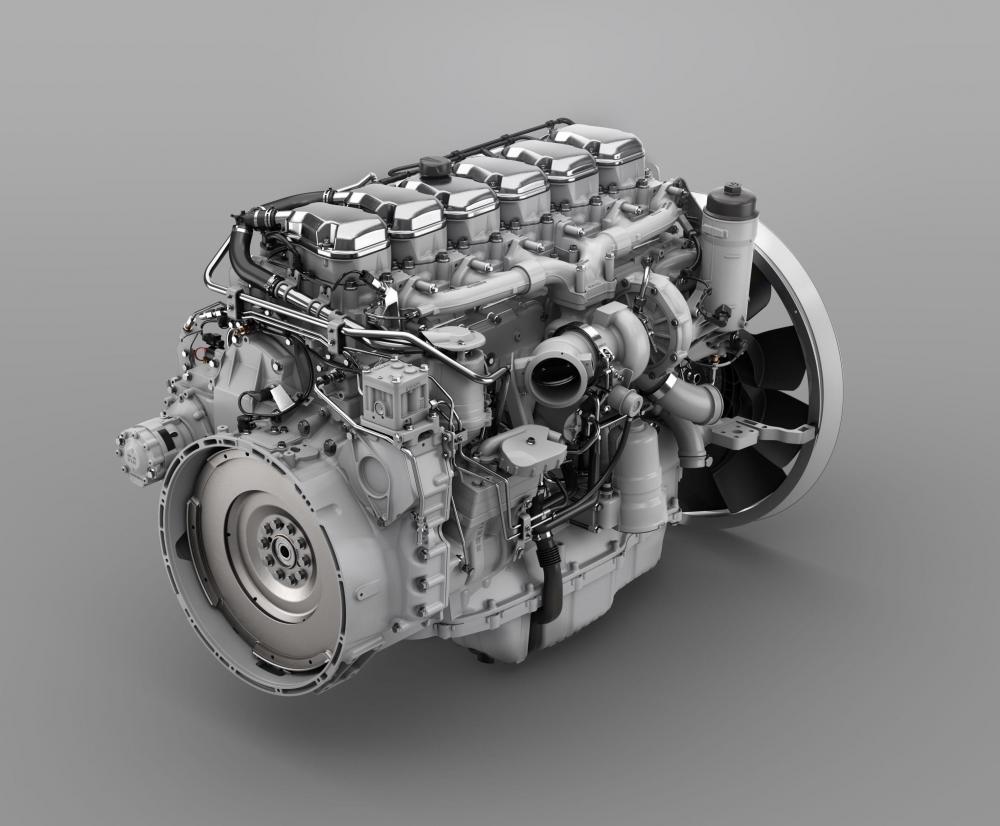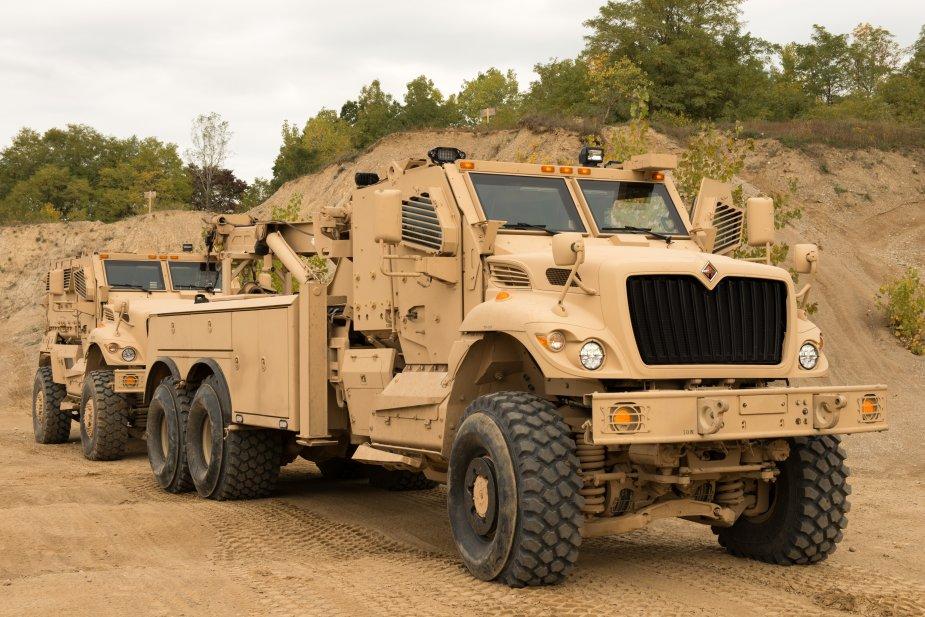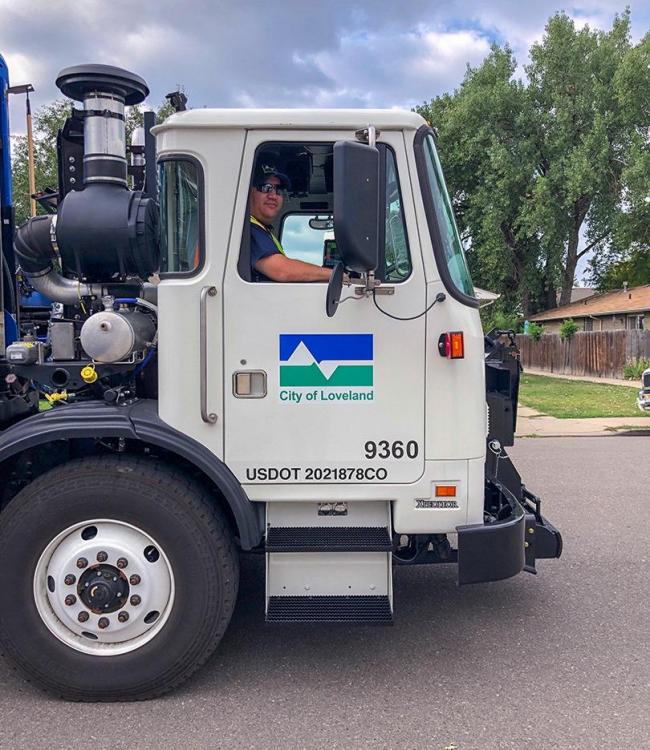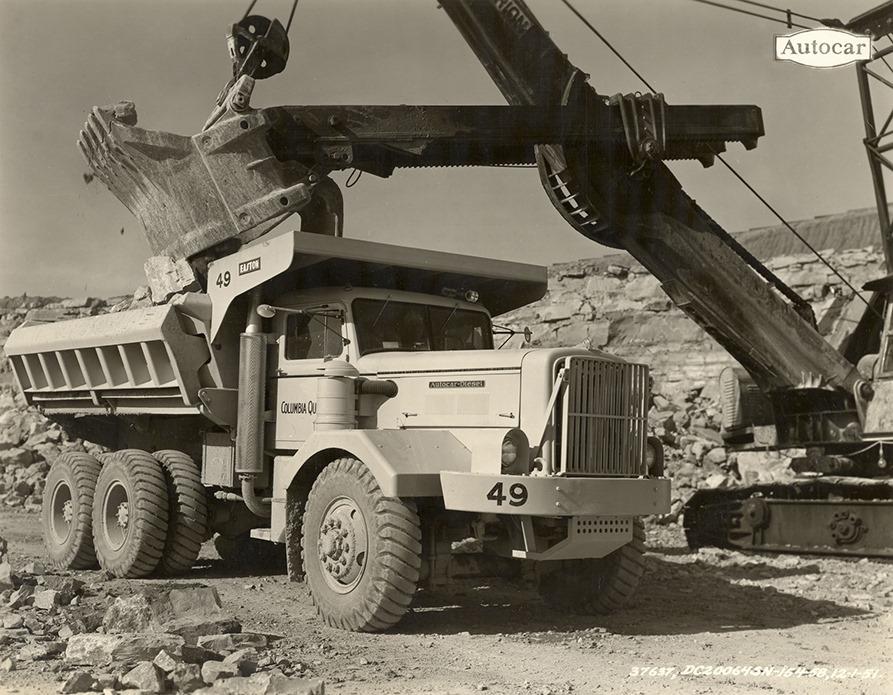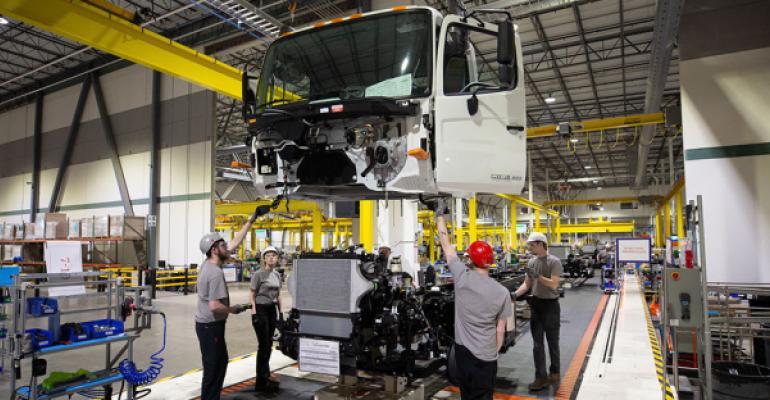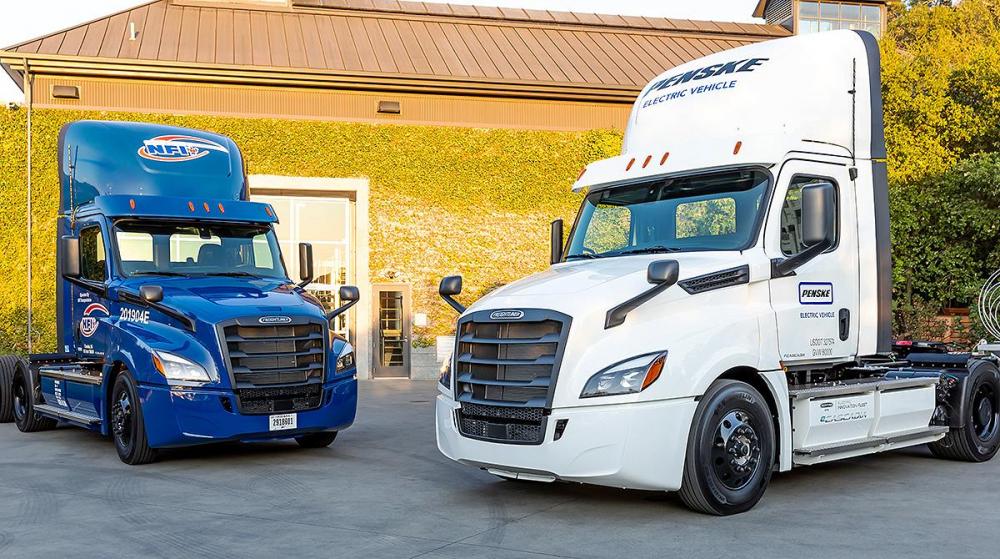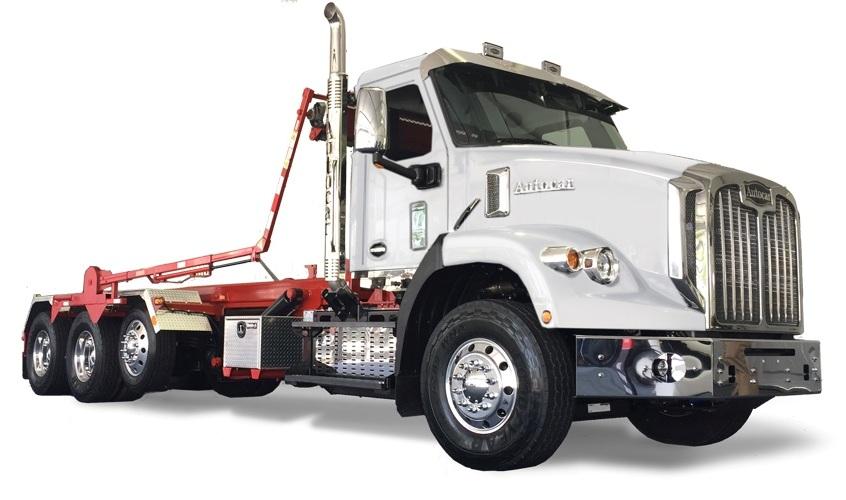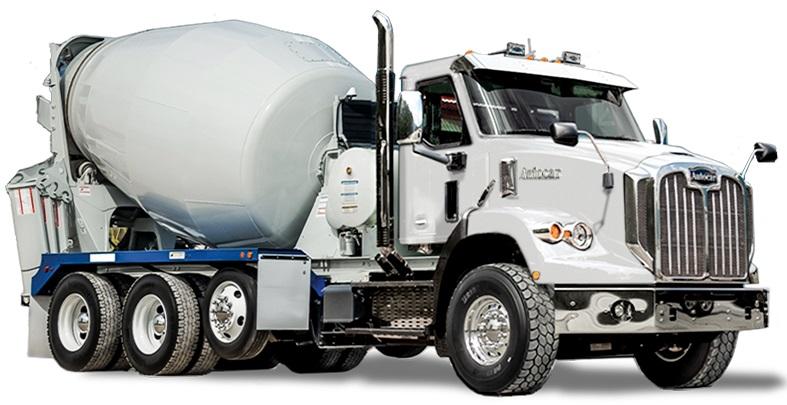
kscarbel2
Moderator-
Posts
18,893 -
Joined
-
Days Won
114
Content Type
Profiles
Forums
Gallery
Events
Blogs
BMT Wiki
Collections
Store
Everything posted by kscarbel2
-
Volkswagen to invest $577 million in Brazil plant Reuters / August 29, 2019 SAO PAULO -- Volkswagen will invest 2.4 billion reais ($577 million) in one of its Brazil factories, Sao Paulo state governor Joao Doria said on Thursday during a visit to the automaker's headquarters in Germany. Sao Paulo state is the heart of Brazil's auto industry, although its relevance has been in decline in recent years as other states have offered more generous tax incentives. But Doria's governorship has been marked by a strong push to attract and retain manufacturing plants in Sao Paulo. Earlier this year, he introduced a tax plan for automakers granting them a 25 percent reduction in value added taxes as long as they invested at least 1 billion reais and created 400 new jobs. Sao Paulo state said in a statement that Volkswagen would create 1,000 jobs and invest in its Sao Bernardo do Campo plant, in a city that is the historic center of Brazil's auto industry. The incentive plan was created when General Motors, Brazil's market leader, hinted late last year that it might close or severely reduce its operations in the state as it warned of heavy losses. Other automakers have also made moves in their Sao Paulo operations. Ford Motor Co. announced this year that it would close its Sao Bernardo do Campo plant, its oldest in the country, which would cost almost 3,000 jobs. Doria responded by offering to find a buyer for the plant, and while domestic automaker CAOA entered negotiations with Ford regarding a possible purchase, no formal announcement has been made.
-
Trump and Immigration (Illegal Immigrants in the US)
kscarbel2 replied to kscarbel2's topic in Odds and Ends
I want legal immigration according to existing U.S. law. But this.......I don't get it. ------------------------------------------------------------------------------------------------------------------------------- Reuters / August 28, 2019 Children born to U.S. citizens stationed abroad as government employees or members of the U.S. military will no longer qualify for automatic American citizenship under a policy change unveiled on Wednesday by the Trump administration. Effective Oct. 29, parents serving overseas in the U.S. armed forces or other agencies of the federal government would need to go through a formal application process seeking U.S. citizenship on their children’s behalf, the policy states. Currently, children born to U.S. citizens stationed by their government in a foreign country are legally considered to be “residing in the United States,” allowing their parents to simply obtain a certificate showing the children acquired citizenship automatically. But an 11-page “policy alert” issued by U.S. Citizenship and Immigration Services (USCIS) said the agency found the prevailing policy to be at odds with other parts of federal immigration law. Beyond that, the rationale for the policy change remained unclear. “USCIS is updating its policy regarding children of U.S. government employees and U.S. armed forces members employed or stationed outside the United States to explain that they are not considered to be ‘residing in the United States’ for purposes of acquiring citizenship,” the memorandum said. The number of government and military personnel affected by the change was not immediately known, but the revised policy sparked immediate consternation on the part of some organizations representing members of the armed forces. “Military members already have enough to deal with, and the last thing that they should have to do when stationed overseas is go through hoops to ensure their children are U.S. citizens,” said Andy Blevins, executive director of the Modern Military Association of America. He urged Congress to take action to address the situation to “ensure our military families don’t suffer the consequences of a reckless administration.” -
Alexa St. John, Automotive News-Reuters / August 28, 2019 DETROIT -- The home of UAW President Gary Jones was targeted in a series of FBI raids across Michigan and other states as part of a widening investigation into a years long federal corruption scandal involving auto executives who offered bribes and kickbacks to influence labor negotiations. Federal agents executed search warrants at multiple locations, including Jones' home in Canton, Mich., and the UAW Black Lake Conference Center. The Detroit News reported that other locations searched were the California home of former UAW President Dennis Williams, the Wisconsin home of Williams' former aide Amy Loasching, and UAW Region 5 headquarters near St. Louis, Mo. Jones was previously director of Region 5. FBI spokeswoman Sutton Roach said: "The FBI is executing lawful search warrants today. We decline to comment further at this time." The UAW said in an emailed statement that the union and Jones both have been cooperating with the investigation, adding: "There was absolutely no need for search warrants to be used by the government today." The News reported Black Lake is part of the investigation of the UAW building a retirement home for Williams. The project has raised questions about union leaders spending membership dues on personal luxury items. So far, nine Fiat Chrysler Automobiles executives and UAW officials have been charged in the scandal, including former UAW vice presidents General Holiefield and Norwood Jewell, and former FCA official Alphons Iacobelli. Michael Grimes, an assistant in the UAW's General Motors department, was the first UAW official outside of the FCA department to be charged. Eight people have received prison sentences stemming from the probe. The scandal has dominated union talks with the Detroit 3 automakers this summer as trust in union leadership has eroded. "This round of contract negotiations was always going to be very difficult, even without the shadow of a federal investigation hanging over the union," said Kristin Dziczek, vice president of industry, labor and economics at the Ann Arbor, Mich.-based Center for Automotive Research. "That shadow has just become a giant storm cloud." Even if the FBI searches do not result in indictments, this development further undermines the confidence of rank-and-file UAW members in their union's leadership, she added. "That could make it very difficult to ratify a new contract," Dziczek said, pointing to potentially bad news for the union and automakers alike. The UAW full statement reads: "The UAW and President Gary Jones have always fully cooperated with the government investigators in this matter. As the leader of the UAW, President Jones is determined to uncover and address any and all wrongdoing, wherever it might lead. "There was absolutely no need for search warrants to be used by the government today — the UAW has voluntarily responded to every request the government has made throughout the course of its investigation, produced literally hundreds of thousands of documents and other materials to the government, and most importantly, when wrongdoing has been discovered, we have taken strong action to address it. The UAW will continue to cooperate with the government in its investigation, as we have been doing throughout. "Trust in UAW leadership is never more important than during the bargaining process, when profit-laden auto companies stand to benefit from media leaks, false assumptions, and political grandstanding. The sole focus of President Jones and his team will be winning at the bargaining table for our members."
-
-
Heavy Duty Trucking (HDT) / August 27, 2019 Cummins will expand its lineup of X15 diesel engines with two new additions to the family – a new X15 Efficiency Series engine and a new X15 Productivity Series diesel engine. According to Cummins, the 2020 X15 Efficiency Series engine delivers up to 5% better fuel economy than the prior X15 Efficiency Series engine and is designed for increased uptime and improved driver satisfaction. It has a new maintenance schedule, including an oil-drain interval of up to 75,000 miles. An oil drain interval of up to 80,000 miles is available to customers using Valvoline Premium Blue 15W-40. For added value, customers participating in Cummins OilGuard program have the potential to increase to a 100,000-mile ODI. These extensions will decrease maintenance costs and improve vehicle uptime for customers, all while protecting their coverage under warranty should they need it, Cummins said. “We are proud of the performance and reliability of the X15 engine platform,” said Brett Merritt, vice presidentt of Cummins' On-Highway Engine Business. “The new 2020 X15 Efficiency Series engine provides improved fuel economy and further reduces greenhouse gas emissions. That’s why we’re bringing our new X15 Efficiency Series engine and X15 Productivity Series offering to the market a year ahead of regulation requirements.” Engine hardware enhancements to the Efficiency Series provide better air handling and lower friction, delivering up to 3.5% fuel economy improvements to the base engine offering, the manufacturer said. Lower oil consumption is expected with modified liner geometry in the power cylinder. Valve adjustments have been made for increased durability. “Since the launch of the X15 platform in 2017, customers are hitting or exceeding fuel mileage targets and only performing preventative maintenance to the product. With a 2020 X15 Efficiency Series engine, customer benefits will only improve,” Merritt said. The new EX ratings offered in the X15 Efficiency Series deliver expanded powertrain capabilities that can deliver up to an additional 1.5% fuel efficiency increase on top of the improvements gained through base engine hardware and feature enhancements, Cummins said. These ratings contain the full suite of powertrain features, including not only all prior ADEPT features, but new capabilities such as predictive gear shifting, predictive braking, on-ramp boost and dynamic power, delivering powertrain performance and driver satisfaction across an entire fleet. Powertrain features in the EX ratings are available exclusively with the X15 Efficiency Series engine when paired with the Endurant transmission from the Eaton Cummins Automated Transmission Technologies joint venture. “The EX ratings represent the incredible gains that come from the integration of industry leading engine and transmission technologies. Customers, in one easy selection, receive an optimized powertrain already configured for the highest levels of efficiency and drivability. We were able to make these improvements without compromising the power drivers demand, which means everyone wins,” said Merritt. The X15 Productivity Series ratings are designed for multi-purpose, vocational and heavy-haul customers who look not only for efficiency in their powertrain, but also response and performance needed to get the job done thanks to a wider engine speed range, according to Cummins. The X15 Productivity Series now features six new ratings available in 2020, along with four former Performance Series ratings. Cummins said the Productivity Series offering is comprised of two different engine hardware sets, common with either the 2020 X15 Efficiency Series or the X15 Performance Series. In 2020, Cummins will continue to offer the same X15 Performance Series engine with no changes. The 2020 X15 Performance Series consists of seven ratings, with four former Performance Series ratings moving to the Productivity Series offering.
-
GM diesel pickup shipments start after certification delay Hannah Lutz, Automotive News / August 27, 2019 General Motors has begun shipping the Duramax diesel versions of its full-size pickups to dealerships, after about a three-month delay related to the government's emissions certification process. The diesel Chevrolet Silverado and GMC Sierra are arriving as 2020 models, not 2019s as the company had planned. Shipments started the week of Aug. 12, but filling the pipeline of orders could take three to six weeks, GM spokesman Monte Doran told Automotive News. "They are out. They are moving, and we're getting them to dealers as quickly as we can," Doran said. GM had intended to start shipments of the diesel pickups in May. The redesigned gasoline versions began arriving at dealerships in August 2018. "The emissions certification took longer than we had expected, so rather than launching them for one month as '19s, we decided to launch them as 2020," Doran said. "That just made some logistic sense." Tim Herrick, executive chief engineer of GM's full-size trucks, said at a GMC media event in Wyoming last week that the U.S. EPA required more details than expected for the certification. The EPA had the vehicles for more than a year, he said. The federal government has taken a more stringent position on emissions certification, especially with diesel engines, after Volkswagen Group's emissions violations surfaced in 2015. Other automakers, including Fiat Chrysler Automobiles and BMW Group, also have delayed launches because of the lengthy certification process. Fuel-economy king Sticker prices for the diesels start at $42,385 including shipping for the Silverado and $43,285 for the Sierra. Upgrading to the 3.0-liter turbodiesel costs $3,890 more on trims that normally come with a 2.7-liter four-cylinder and $2,495 more than trims with a 5.3-liter V-8. With a highway fuel-economy rating of 33 mpg, the Sierra gets the best mileage among the Detroit 3 automakers' diesel half-ton pickups, beating the top ratings of 30 mpg for the Ford F-150 turbodiesel and 27 mpg for the Ram Classic EcoDiesel. Ram has not revealed mileage ratings for its upcoming third-generation EcoDiesel. The Sierra's highway rating is 30 mpg. The GM turbodiesels, built in Flint, Mich., are the first the company has sold in light-duty pickups since 1997. The Silverado has a 9,300-pound towing capacity and a maximum payload rating of 1,870 pounds. The Sierra is rated to tow 9,100 pounds and carry 1,830 pounds.
-
Ford Explorer launch required major redo of aging plant Michael Martinez, Automotive News / August 26, 2019 The high-profile changeover of the Ford F-150 plants in Michigan and Missouri in late 2014 to build aluminum-bodied pickups may have been the most important manufacturing endeavor in Ford Motor Co.'s recent history, given the trucks' outsize influence on the automaker's bottom line. But the scope of that work paled in comparison to the retooling of Ford's Chicago Assembly Plant over the course of 30 days this year in preparation for the redesigned Explorer and the new Lincoln Aviator. Beginning in March, Ford orchestrated a complex dance of human and machine that transformed most of the 95-year-old plant and its 113-acre site along the Calumet River on the city's South Side. Some 11,000 workers gutted and rebuilt the body shop, modernized the paint shop and upgraded every workstation in the final assembly area. Every 90 seconds, a synchronized lineup of trucks dropped off loads of scrap metal next to the river. Barges took the metal, weighing more than the Eiffel Tower, to a recycling center a mile away. Inside the plant, supervisors used stopwatches to clock thousands of GPS-tracked tractor-trailers that hauled in new tooling in a specific order. Officials rented nearby lots to hold the trailers so the tooling would be close by when the time came to install it, rather than storing it farther away and risking getting off schedule because of Chicago's notoriously heavy traffic. They did it all at a blindingly fast pace. In one area of the body shop, crews tore out old equipment, installed new machines and began building parts within seven days. "It's the most difficult thing I've been involved in," Gary Johnson, a 30-year-plus Ford veteran appointed head of manufacturing and labor affairs last fall, told Automotive News. "Just the scope, age of the complex and the location of it. This was the ultimate team sport." Ford CEO Jim Hackett told investors on the company's July earnings call that the Chicago changeover was "in some ways a bigger endeavor" than what happened five years ago at its F-150 plants, even though the company publicized those projects more. The transformations in Dearborn, Mich., and Kansas City, Mo., focused only on the body shop. At Chicago Assembly, Ford's oldest continuously operating plant, the project included the paint shop and final assembly areas, too. Installing equipment in 2014 to handle aluminum body panels instead of steel ones was challenging, executives said, but shifting from front- to rear-wheel-drive vehicles in Chicago was more complex. "The whole process is different," Johnson said. "We changed about 20 to 25 percent of the stations in Dearborn Truck. In Chicago, it was basically about 90 to 95 percent." The Explorer is Ford's third-best-selling U.S. nameplate, behind the F series and Escape. It's also believed to be one of the most profitable vehicles in the company's lineup. The 2020 Explorer Platinum has a sticker price of more than $60,000 including shipping. A river runs through it One of the biggest differences between the F-150 and Explorer changeovers was location. Although the Dearborn and Chicago sites are near major interstate highways, daily gridlock in the Chicago area made it more difficult to move trucks on a tight deadline. So Ford decided to take advantage of the location along the river, renting a barge that ultimately carried more than 10,000 tons of scrap metal. Multiple construction cranes worked long hours during the first week to move the metal aboard. Johnson said the project's leadership team meticulously planned the changeover years ahead of time, employing a process he used while working in Ford's Asia Pacific manufacturing operations. "We knew we were going to have to do this," he said. "We knew the complexity of it. We could plan to the day, to the hour, to the minute." Once the plant was stripped of old equipment, Ford could lean on its recent experiences at Dearborn Truck, Kansas City Assembly and other plants to quickly install more than 500 truckloads of new machinery. Ron Ketelhut, who oversaw the Dearborn changeover and is now global director of manufacturing strategy and advanced planning, said Ford learned to build new tooling at off-site supplier shops, then pull it out, load it onto trucks, ship it in order and store it nearby until needed. In Kansas City, for example, the company temporarily parked the trailers at an old amusement park. "Not only did it have to be there on time, it had to be in order," Ketelhut said of the Chicago project. "It was like putting Legos together." To keep the trucks moving, workers prepared extensively by watching videos explaining how to load and unload the trucks most efficiently. Ketelhut likened the sessions to a sports team reviewing film before game day to correct or prevent mistakes. By the time the changeover was finished, Ford had installed 600 robots, 500 error-proofing tools, several 3D printers and other 3D-printed tools. It also spent $40 million on employee-centered improvements including cafeteria updates and new break rooms. While employees were waiting for new equipment, Ford trained them using augmented and virtual reality so that, when everything was finished, they could become comfortable more quickly. ‘Toughest' changeover Hackett, on the second-quarter earnings call, said Ford has its "toughest" changeover out of the way as it prepares to introduce a wave of new and redesigned vehicles over the next year. The Chicago project ran smoothly for the most part, aside from rainstorms that set it back about four hours. Workers made up the lost time in less than a day, Johnson said. There were no major injuries or incidents during the construction. The biggest setback, Johnson joked, involved his pride: "I've got a little more gray hair." .
-
Woof! It's #NationalDogDay. Matt at Monadnock Disposal Service, Inc. sent in this shot of his dog, Peard. Post a photo of your dog and make him famous! #AlwaysArff Always Up - Autocar Trucks .
-
Scania Group Press Release / August 16, 2019 Scania’s range of industry leading 13-litre engines is now complemented by a 540 hp version. The new engine is primarily intended for applications and customers where lots of power and drivability are in demand while weight sensitivity or limitations such as front-axle loads hinder the use of Scania’s slightly heavier V8 engines which start at 520 hp. New Uptime Features Scania is also introducing several features and improvements that all share a commitment to uptime. By adding features and functionality that help ensure that the truck will be fit for operation, Scania customers stand a better chance of reaching the best total operating economy. Read more in the press releases: https://www.scania.com/group/en/wp-content/uploads/sites/2/2019/08/scania-adds-a-540-hp-version-to-its-13-litre-engine-range.pdf https://www.scania.com/group/en/wp-content/uploads/sites/2/2019/08/scania-is-introducing-new-uptime-features.pdf .
-
MAN Truck & Bus Press Release / August 16, 2019 The new MAN D26 engine: the eXtremely powerful engine for your everyday challenges! More power under the hood and a consistently low consumption: The MAN D26 engine has 10 hp more power, 100 Nm more torque and offers 70 kilos of additional payload in comparison to its predecessor. .
-
-
It's Friday afternoon, are you working this weekend? Hopefully our friend, Mark Velasquez at the City of Loveland, Colorado - Government, will get a well-deserved rest after a hard week's work. #WorkHardPlayHard #AutocarACX Always Up - Autocar Trucks .
-
Drop another bucket - I got room. With a 12 yard side dump body, this 1951 Autocar DC-20064SN weighed 43,500 lbs empty. What's the capacity? Until it's full, and then some more. #AutocarDC #AlwaysUp #TBT #ThrowbackThursday Thanks to Mike Lusher. Always Up - Autocar Trucks .
-
Hino officially opens $100 million West Virginia factory
kscarbel2 replied to kscarbel2's topic in Trucking News
"Hino Motors began producing trucks on American soil in 2004 at parent company, Toyota's manufacturing facility in Long Beach, California. " Wrong. The first Hinos built in America were assembled from KD kits by Jim Moran's Southeast Toyota Distributors in Jacksonville, Florida in 1983, model FFs and FGs (25,500lb to 32,000lb GVW). I was there. https://www.newspapers.com/image/?clipping_id=15709348&fcfToken=eyJhbGciOiJIUzI1NiIsInR5cCI6IkpXVCJ9.eyJmcmVlLXZpZXctaWQiOjIzNTU4MDMwNywiaWF0IjoxNTY2NTIyODc2LCJleHAiOjE1NjY2MDkyNzZ9.6LjS10YE68KmQ6bTDTCssq4-oXxMO4wzQ1fBHQK_3KE -
Heavy Duty Trucking (HDT) / August 22, 2019 Hino Motors has officially opened its new 1,000,000 sq. ft. manufacturing facility in Mineral Wells, West Virginia. The ceremony took place Wednesday, August 22, capping a two-year effort that saw a former retail distribution center turned into a truck factory. The first truck rolled off the new assembly line in June. Current production stands at 66 trucks per day on one shift. Hino expects production rates to grow to 15,000 units on one shift by 2020. “Hino is committed to building its trucks and products in the market it operates in," said Hino Motors Ltd. President and CEO, Yoshio Shimo. "We have committed $100 million in capital investment into our new state-of-the-art manufacturing facility, generating 250 new jobs. Today, I am excited to announce an additional commitment of $40M to meet increased demand and product configurations, creating an additional 250 new jobs, totaling 800 team members." The current workforce stands at 470 team members with plans to expand that to 550 by next year. The facility will build all of Hino's Class 6, 7 and 8 conventional trucks, including the newly released class 7 and 8 XL Series. Hino Motors began producing trucks on American soil in 2004 at parent company, Toyota's manufacturing facility in Long Beach, California. That facility closed in 2007 and production transferred to Williamstown, WV. Hino produced over 50,000 trucks at that facility. Today the Williamstown plant is vacant but remains a Hino property. All production has since shifted to Mineral Wells. No plans for the Williamstown facility were discussed during Wednesday's ceremony. Hino Motors Manufacturing U.S.A. president, Takashi Ono, offered thanks to the town of Williamstown for being Hino's home for the past ten years, noting that all the Williamstown employees were transferred to Mineral Wells. "This plant will serve as the manufacturing foundation and define the excellence of Hino Trucks in the United States," he said. "I'm proud, knowing that from New York to Dallas to Los Angeles, the DNA of Hino Trucks will shine with the passion, dedication and craftmanship of West Virginians." "But I believe the greatest accomplishment for us may not be this new plant or the new trucks produced here, but that we managed to keep all of our team members. We could not have asked for a better outcome. You are our greatest asset. It is what you do every day that truly defines Hino." The event was attended by West Virginia Governor, James C. Justice, III, state senators, Joe Manchin (D) and Shelley Moore Capito (R), Congressman David McKinley (R) and several county and local officials. “Hino has been a tremendous partner to the State of West Virginia since 2007,” stated Governor Justice. “With 800 West Virginians planned to be employed by Hino, they continue to be one of West Virginia’s biggest employers. We thank Hino for their continued investment in the great state of West Virginia.” Prior to the official grand opening celebration, Hino executives and visiting dignitaries took part in the traditional Japanese tree planting ceremony, and later shared the Kagami-Wari ceremony to consummate Hino’s growth commitment to the U.S. In addition to producing Hino’s current line up of conventional trucks, the Mineral Wells assembly plant will produce a new line of Class 7 and 8 trucks, the XL series, powered by Hino’s A09, 9-liter engine. .
-
First Electric Freightliner eCascadia Models Enter Freight Operations at NFI, Penske Transport Topics / August 22, 2019 YOUNTVILLE, California — Daimler Trucks North America has handed over its first two battery-electric Freightliner eCascadia models to NFI and Penske Truck Leasing for use in their daily freight operations. These Class 8 tractors will begin hauling cargo in Southern California, but more significantly, they will help pave the way for the full commercialization of electric-powered trucks in North America . DTNA celebrated the milestone Aug. 20 here at Cliff Lede Vineyards with executives from NFI and Penske and members of the trade press. “This is revolutionary. This is the start of a major change in the way companies will operate in the future,” Sid Brown, NFI’s CEO, told Transport Topics at the event. “You don’t get a chance too often in your lifetime to be at the forefront of a technological revolution,” he added. Richard Howard, DTNA’s senior vice president of sales and marketing, said the first eCascadias were the result of a “co-creation” process between the truck maker and its fleet customers, and hailed the official handoff of the trucks to NFI and Penske as “an extremely special moment.” The heavy-duty eCascadia and its smaller sibling, the medium-duty eM2, are slated to enter series production in late 2021. Ahead of that broader rollout, NFI and Penske are acting as pioneers by deploying the first iterations of those vehicles in real-world operating conditions. These initial test trucks, dubbed the Freightliner Electric Innovation Fleet, will enable DTNA and the fleets to build knowledge about how best to implement the technology. DTNA plans to expand this test fleet to a total of 20 eCascadias and 10 eM2s, a target the manufacturer aims to achieve by the end of this year, said Andreas Juretzka, director of product development for e-mobility. “We are excited,” he said. “We are hoping for so much feedback so we can tune it into our future product.” Juretzka also characterized these first steps toward commercial vehicle electrification, particularly in the Class 8 segment, as a “huge moment” for the industry. Advances in battery technology have created a real chance for electric propulsion to eventually overtake internal combustion engines, he said. But the integration of electric vehicles into trucking operations will be a long journey. “This is just the first small step,” said Michael Scheib, director of e-mobility platform at DTNA. “This is going to be a long and winding road until we scale up this technology to make it mainstream in this industry.” In the near term, electric trucks will be best suited to shorter routes. NFI plans to put its eCascadias to work in port drayage operations, hauling freight between the Los Angeles-Long Beach port complex and warehouses in Southern California, where air quality requirements are set to become much more stringent. To meet those targets, “you have to go big,” said Matt Miyasato, deputy executive officer for science and technology advancement at the South Coast Air Quality Management District, which partially funded the Innovation Fleet with a nearly $16 million grant. The greater Los Angeles region suffers from the worst air quality in the nation, Miyasato said, highlighting the value of zero-emission trucks for that region. “From an environmental standpoint, this is absolutely the best way to go,” NFI’s Brown said. For Penske Truck Leasing, operating the eCascadias and eM2s will enable the company to build expertise in this emerging technology and share that knowledge with its truck leasing customers. “We are always evaluating the latest technology because our customers are demanding that from us, so we want to make sure we understand what is out there and what is available,” said Paul Rosa, senior vice president of procurement and fleet planning at Penske Truck Leasing. “We’re just over the moon about the opportunity to put a vehicle like this in the hands of our logistics team.” Penske plans to utilize its eCascadias in dedicated shorthaul applications in Southern California. “This is going to transform the industry,” Rosa said. “When drivers get a chance to get into this type of vehicle, they’re not going to want to go into something else.” NFI’s Brown said his company’s fleet is an ideal fit for electrification because the vast majority of its vehicles return to base each day. Looking ahead, Brown believes further improvements in battery technology will expand the range of electric trucks in the coming years, which would clear the way for further adoption. “I see by 2025, about 60% of our fleet will probably be electric,” Brown said. “We’re a big believer.” He also envisions installing solar panels at NFI’s warehouses to help power its future fleet of electric trucks. In addition to the environmental impact, Brown believes electric trucks could ease the burden on maintenance shops and help address the technician shortage because the vehicles have far fewer parts than diesel trucks — and none of the diesel aftertreatment systems. Electric trucks also run much more quietly than diesels, which could allow trucks to operate at warehouses during the night without noise violations, and therefore take some truck traffic off the road during the day, he said. .
-
CNET / August 16, 2019 The US Department of Energy on Friday announced its 2019 fiscal year award funds for what it calls "advanced vehicle technologies research" and both General Motors and Ford received healthy sums of cash. The government awarded GM a total of $9.1 million including $7.1 million toward research of a "low-mass and high-efficiency" engine for medium-duty trucks. GM's stable of medium-duty trucks currently includes the Chevrolet Silverado 4500HD, 5500HD and 6500HD. These Class 4, 5 and 6 trucks boast a 6.6-liter Duramax diesel V8 engine. Across town, GM rival Ford received $7.5 million that will go toward "next-generation high-efficiency boosted engine development." If we're taking the word "boosted" in a rather colloquial sense, it sounds like Ford may have a new turbocharged engine family in the works. In total, the DOE said it awarded $59 million to 43 projects that largely revolve around electric powertrain components. Other research areas set to receive funding include alternative fuel and mobility services in rural America.
-
-
"That" is classic Ford medium. Many a school bus wore that face.
-
Volvo Introduces Enhanced Turbo Compounding for D13 Diesel
kscarbel2 replied to kscarbel2's topic in Trucking News
-
I'm sorry Shawn. I keep searching out more Western Star stories.
-
Peterbilt Motors Press Release / August 19, 2019 .
-
Navistar Gains Reversal of Massive MaxxForce Judgment David Cullen, Heavy Duty Trucking (HDT) / August 20, 2019 A state appellate court on Aug. 14 reversed a judgment against Navistar Inc. that resulted from a lawsuit in which a motor carrier alleged that trucks it purchased powered by the MaxxForce 13L diesel engine were defective. Two years ago, to the day, on Aug. 14, 2017, a Tennessee jury found against Navistar and awarded $10.8 million in actual damages and $20 million in punitive damages to Milan Supply Chain Solutions (formerly known as Milan Express), which had purchased 243 Navistar International ProStars with MaxxForce engines. Tennessee-based Milan had alleged that Navistar had failed to disclose that the MaxxForce 13L engine, which used exhaust gas recirculation to meet 2010 emissions standards rather than the selective catalytic reduction used by other truck and engine makers, was launched with “serious known defects.” The carrier also alleged that Navistar, while touting the quality of its testing program, knew that the testing had serious flaws, was incomplete at launch, and put the trucks into customers’ hands knowing that the customers would end up becoming the de facto test fleet for the new 2010-year model engine. After that judgment, Navistar said in a statement that it would evaluate its options to challenge it, noting it had successfully defended similar claims in several jurisdictions, including dismissal of claims of fraud in courts in Texas, Wisconsin, Michigan, Indiana, Alabama, and Illinois. On Aug. 14, 2019, the Tennessee Court of Appeals reversed the 2017 decision. The appellate court stated that Navistar’s appeal “raised a plethora of issues for our consideration,” including one that hinged on the court’s reading of the “economic loss doctrine” for product liability cases that is enshrined in Tennessee law. What that boils down to is that in a product liability action, what a plaintiff can recover for purely economic losses is that defined in a contract (such as a warranty), not that resulting from a tort suit. The appellate judges ruled that based on several findings, “including our conclusion that the asserted fraud claims are barred by the economic loss doctrine,” the court reversed the judgment award to Milan.
-
There’s no confirmation that the X15-powered model will have this same hood styling. it might very well be different, and more to everyone’s liking. For a maneuverable short-BBC construction/refuse truck, I think this short nosed model is impressive.
BigMackTrucks.com
BigMackTrucks.com is a support forum for antique, classic and modern Mack Trucks! The forum is owned and maintained by Watt's Truck Center, Inc. an independent, full service Mack dealer. The forums are not affiliated with Mack Trucks, Inc.
Our Vendors and Advertisers
Thank you for your support!


